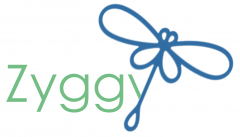Zyggy sensors by aletnis provide permanent remote sensing solutions using the latest NB-IoT network technlogy.
A new technology providing enhanced sensing opportunities
The Zyggy range of sensors use the latest Low Power Wide Area (LPWA) category of wireless communication technologies based upon the new Narrowband Internet-of-Things (NB-IoT) standard. These sensors are focused on industrial applications such as the ones shown in the examples below, where they can provide 24/7 monitoring while incurring minimal through life cost.

NB-IoT provides an opportunity to acquire a wide range of sensor inputs from remote locations and transmit the information gathered over a long range while using little power. The advantage of this is that the sensors can operate with batteries for many years thereby eliminating the need for regular maintenance thereby significantly reducing acquisition costs.
Modular Sensor options
Zyggy can be configured with a range of different sensor options which plug into the main NB-IoT modem and controller. The user can select the measurement type and measurements interval time. What’s more, a limited amount of ‘at the edge’ processing can be done to ensure that the transmitted data is in the optimum format.
 Zyggy is primarily designed for industrial sensing applications and can be configured to measure various measurands including:
Zyggy is primarily designed for industrial sensing applications and can be configured to measure various measurands including:
- temperature profiles
- 3-axis accelerations
- static pressure
- gas concentration for carbon monoxide and methane
Easy data access
The data received from Zyggy sensors is stored on cloud based servers. This ensures that the real-time and historical data is available via any web browser through secure login. Other benefit include:
Data security
Data stored on cloud is fully encrypted and accessible only via secure login to ensure data privacy
Data analytics
The full historic record of measurements can be stored. Data analytics can then be applied to uncover anomalies and trends in the data. Furthermore, groups of different sensor inputs from one site can be correlated to reveal underlying temporal root cause effects
Geolocation
Each sensor measurement can be associated with an accurate geolocation. With this information, spatial trends in the stored sensor data can be determined
User selectable alarms set on date irregularities
The user can set alarms based upon their defined rules. These alarms can be simple threshold based or dependent upon temporal or spatial trends in the measured sensor outputs.
These alarms can be pushed to nominated users. Furthermore, user instigated or automated responses can be initiated to direct other NB-IoT controlled actuators to operate control devices such as valves, releases or local alarms
The unique capabilities of NB-IoT
The Internet-of-Things (IoT) is rapidly bringing value to many industrial applications. The benefits of IoT in these applications have been provided in large part by the combination of low cost, high performance sensors with Low Power Wide Area network capabilities. Currently LPWA is dominated by two technologies called LoRa and Sigfox. However, in mid 2016 the 3rd Generation Partnership Project (3GPP), a consortium of the leading global telecommunication standardisation bodies, agreed the standard for a new LPWA technology call NB-IoT (Narrowband-IoT).

NB-IoT is an open standard cellular technology related to LTE, designed specifically for LPWA applications. NB-IoT has many advantages over the existing LPWA implementations, making it the obvious choice for the next generation of wireless remote sensors.
Cost effective
Once fully operational the costs of the NB-IoT hardware are expected to be comparable to those of existing LPWA solutions of <$5
Deep coverage
NB-IoT is designed to offer up to 20dB coverage improvements verses GSM resulting in a seven-fold increase in coverage and enabling deeper indoor coverage
Flexible power management
The very low power requirements of NB-IoT devices enable them to operate for 12–15 years on a single battery charge. This also enables them to use harvested power so that they can become truly fit and forget devices.
Secure and available
NB-IoT offers the same level of security as mobile LTE telecommunications, providing high end-to-end security
Bi-directional throughput
NB-IoT can receive as well as transmit low bit rate information enabling the control of remote devices. The speeds achievable are:
< 170kbps (Download)
< 250kbps (Upload)
Straightforward integration
NB-IoT uses licensed frequencies and is being fully supported by most the major wireless telecommunication companies worldwide. This enables Practical easily integrated into existing network infrastructure and is therefore predicted to become the industrial grade LPWA solution
